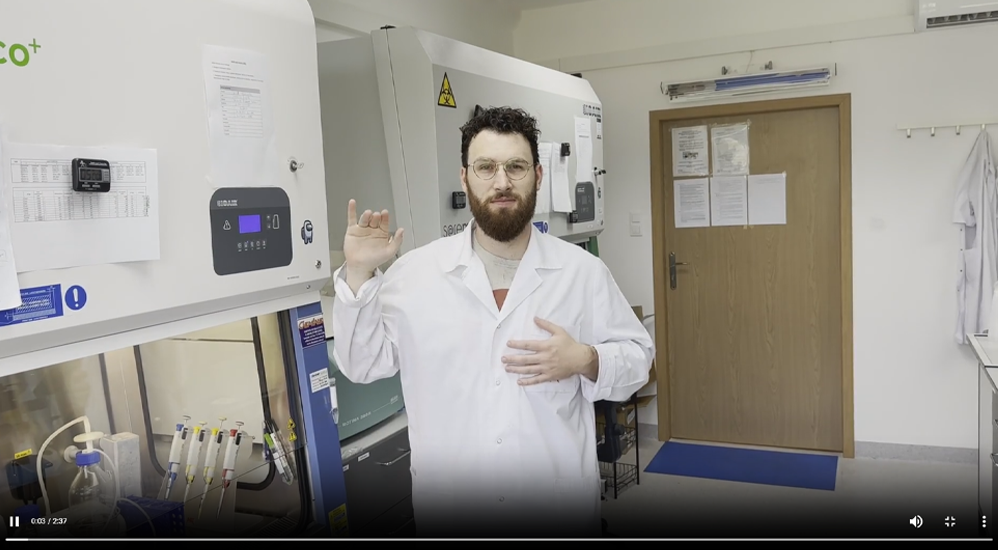Rafał Skopek
Institute of Genetics and Animal Biotechnology
of Polish Academy of Sciences, Warsaw
Acute myeloid leukemia molecular biology
Help me to win the Young Researcher
Award 2023 from Promega.
Why should you vote for me!
People should vote for me, because I believe in importance of my research. I sacrificed a lot to continue conducting my research. Besides that, I was even able to make a three minute video with a smartphone, YouTube guiding video and no skills in that matter.
Abstract
Deregulated epigenetics are functionally linked to AML (acute myeloid leukemia). ATRA (all-trans retinoic acid) is a vitamin A derivative used in the anti-cancer treatment of APL (acute promyelocytic leukemia), a -a subtype of AML. Unfortunately, ATRA has not been proven effective in AML subtypes other than APL. It is believed that the lack of response of AML to ATRA can be epigenetically reversed, so malignant cells can be forced to be responsive for ATRA differentiation treatment. In my opinion, this can be achieved by the use of SMI (small molecule inhibitors).

Yet, despite advances in the field, the use of SMI in combination with ATRA is still a big unknown. To lend credence to finding the adequate drug combination, 670 SMI were tested in combination with ATRA. At all steps of the research, the HEK293 cell line treated with ATRA/TCP (tranylcypromine) combination was used as a referral positive control. The reason for that was that, in clinical research, this combination is known to synergistically increase differentiation capacity and cell death by regulating the expression of key gene sets found in different AML subtypes.To analyze the potential upregulation of the ATRA-dependent pathway, HEK293 cells were transduced with a viral construct carrying RARE (retinoic acid response element), GFP, and luciferase. Secondly, SMI was tested in 10 different concentrations on 384-well microplates. After three days of incubation, ONE-Glo™ Luciferase Assay System was added to measure luminescence. After this step, amount of potential combinations was narrowed to 107.
In the third step, combination cytotoxicity was examined with the same protocol but using CellTiter-Glo® Luminescent Cell Viability Assay. This step allowed choosing the minimal inhibitory concentration of SMI combinations and narrowing the number of positive hits to 60. Then differentiation potential of SMI combinations was tested on HL-60 (ATRA vulnerable) and KG1a (ATRA-resistant) cell lines stained with anti-CD11b antibody in the flow cytometer.
All in all screening process was performed in an outstanding time of around two months. Using this screening approach at the end, we identified 2 SMI of HDAC (histone deacetylase), which are quite potent in combination with ATRA and lead to AML cell differentiation. These combinations are to be tested on mice models.
Describe the activity of your laboratory in a few lines:
My main activities in the laboratory are focused on examination of new drug combinations in acute myeloid leukemia treatment.

What are your other interests outside of science?
My interests focus on scuba diving and underwater macrophotography. I also love gardening and singing.
Tell us something about your scientific background :
I graduated from University of Warsaw with MSc in molecular biology. Three years ago I started my PhD at the Institute of Genetics and Animal Biotechnology of Polish Academy of Sciences in discipline of medical/health science. During that time I was able to publish 5 publications regarding not only acute myeloid leukemia, but also retinoic acid activity in skin and study models for ocular research.
Can you describe yourself in 3 adjectives?
Persistent, systematic, clumsy
If you were a famous scientist, who would you be?
Hopefully, a scientist able to commercially implement his scientific ideas and maintaining high ethical standards. I’d like to be a scientist, who will not forget how hard it was to be a PhD student. Possibility to teach and share my knowledge with students would be also quite a challenge!